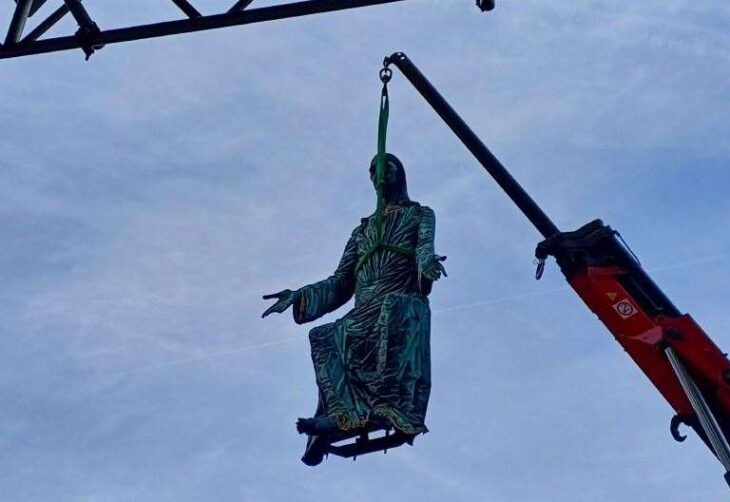
Welcoming Jesus statue finally returns to Canterbury Cathedral’s Christ Church Gate
An iconic feature has finally been returned to one of Kent’s most photographed historical landmark sites.
It follows the installation this morning of the Welcoming Christ to the Christ Church Gate entrance of Canterbury Cathedral.
Workmen were seen carefully manoeuvring and securing the bronze statue, which weighs nearly a third of a ton, back into its rightful place.
It had been taken down from the Grade I-listed Tudor Gothic gate in January 2020 as part of the £1 million restoration of the facade which was created in about 1520.
The figure has undergone a “light touch” restoration and cleaning to preserve its delicate patination.
Sculpted by Klaus Riungwald, the statue is a much newer addition to the gate, having been installed in 1990.
Originally, there was a stone statue of Christ – but between 1642 and 1643, in the English Civil War, Puritan iconoclasts caused significant damage in their “cleansing” of the cathedral, including pulling down the figure.
The Tudor Gothic Gate has been largely under cover since 2018 while essential structural repairs and work to protect and revive its intricate carvings and gilded stonework was undertaken.
The extraordinary work by the Cathedral’s in-house craftsmen and women has restored the Gate’s breath-taking features to their former glory.
They include intricate carvings of mythical beasts, flora and fauna, angels, heraldic shields – including the arms of Archbishop Thomas Becket and Cardinal Wolsey – and the great central boss, comprised of a large rose surrounded by a procession of animals.
One of the most striking features to be revealed is the Gate’s vibrant colour scheme.
It is based on detailed archival research into heraldry and the Gate’s earlier decorative schemes (known as polychromy), examination of historic painting and gilding techniques, and comparisons with other contemporary early 16th-century heraldic paint schemes at Winchester Cathedral and St Georges Chapel Windsor.
>